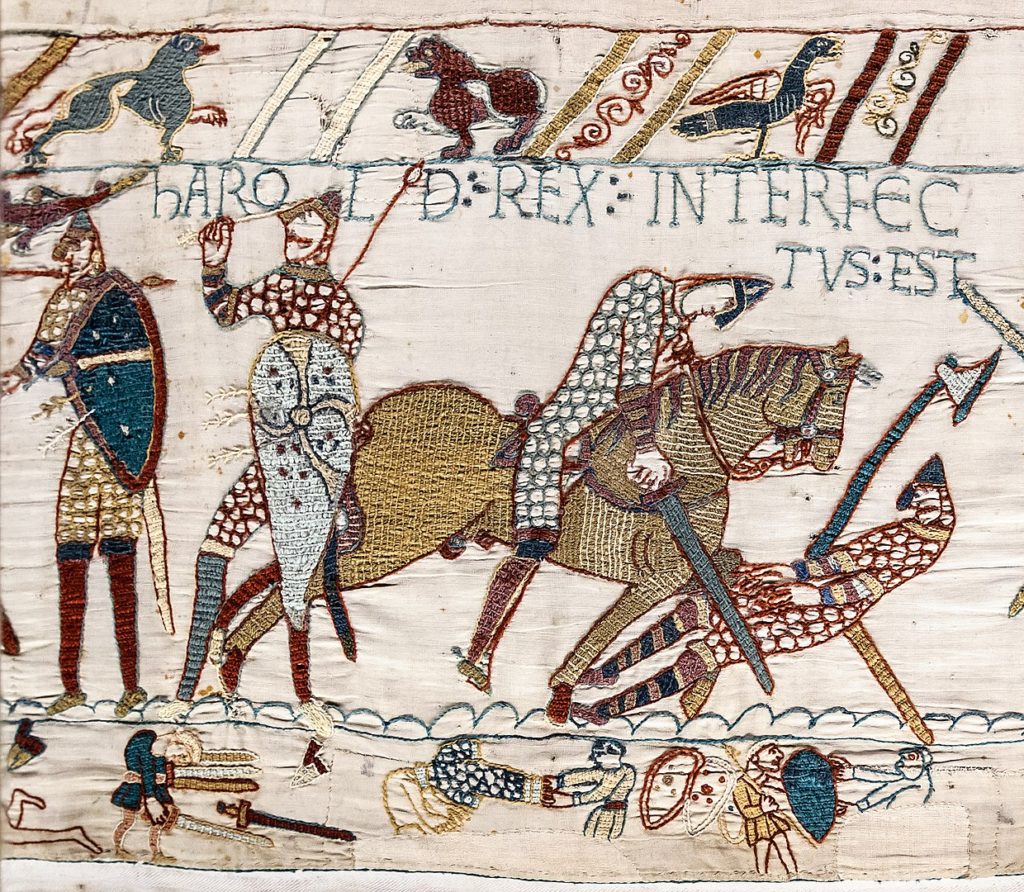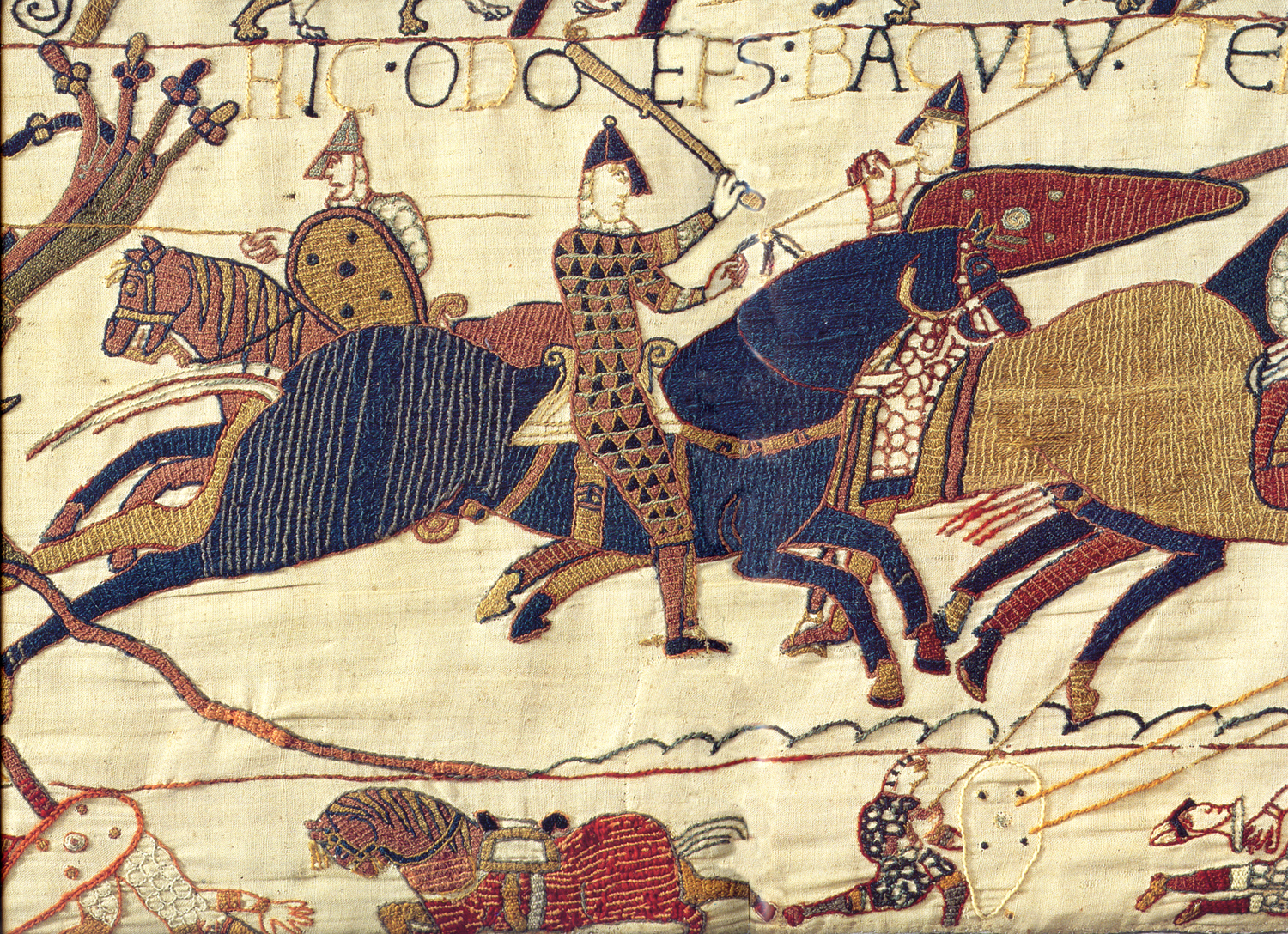Battle of Hastings and the Bayeux Tapestry
On this day, October 14, in 1066, the forces of William, Duke of Normandy faced off against King Harold II and his English army near the town of Hastings. William the (Spoiler Alert) conqueror, ultimately vanquishing his opponent after, according to tradition, Harold was felled by an arrow to the eye. The Norman Conquest, established the Normans as rulers of England. This momentous event still echoes through the centuries, for the Normans fundamentally changed much of English governing structure, language, laws, and culture of which subsequently touched the rest of the world in one way or another.
Beyond the historical and military legacies, one that is really important to me is beautiful the Bayeux Tapestry. The 11th century tapestry created soon after the battle to commemorate Williams conquest. I have admired this amazing work and find it utterly fascinating. It is one of the great works of Romanesque art. As both a designer and a student of history it has much to teach in it’s embroidered 230 ft (70 meters) long and 20 in (50 cm) tall. How to tell a story in a graphical format, which it does exceeding well.
To check it out yourself, one of the best resources is the online explorer from the Bayeux Museum. It’s worth a look and hours of exploring. If you have time, this video below is a fantastic personal tour of the tapestry.
I love the little details of simple medieval life show happening through out (people working, animals being tended) all caught up in titanic political and military upheavals that happen around them, through no fault of the peasant in the filed. Seen in that light we can see that things haven’t really changed that much since that fateful day in 1066.

Images in the public domain via Wikimedia










1000’s -1600’s…..my favorite time in history
It was certainly quite a tumultuous time!